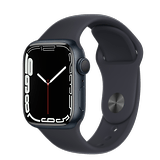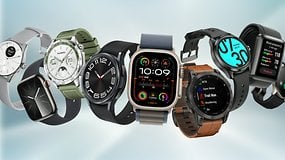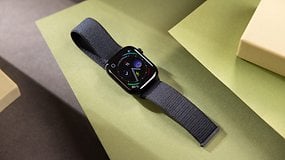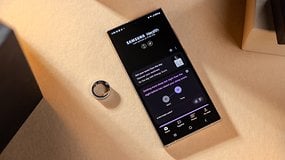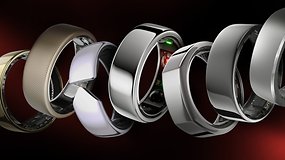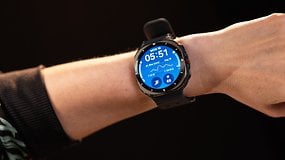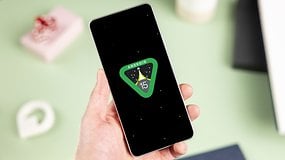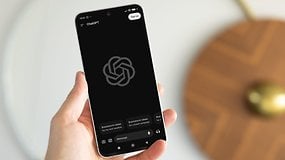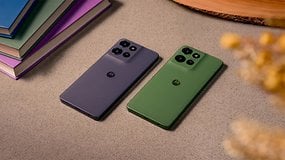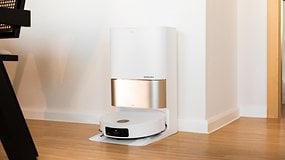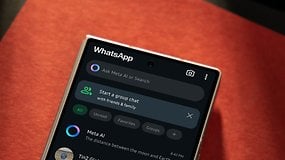Apple Watch Series 9 Review: Doesn't Jump Higher Than It Has To
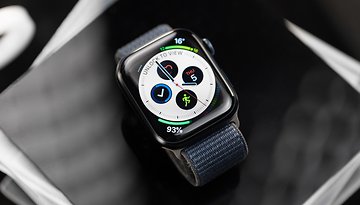
If you hold the Apple Watch Series 9 next to its predecessor, the Watch 8, you will struggle to find any differences. But under the hood, the S9 chipset takes a big step forward, and the new model makes a difference in particularly bright or particularly dark environments. You can find out for whom the new Apple smartwatch is worthwhile—and for whom it isn't—in the long-term review of the Watch Series 9.
Good
- Brighter (and darker!) display
- Great interface and broad app support
- Accurate and versatile tracking
- DoubleTap is practical
Bad
- No 'Precision Start' feature
- Battery life only okay
- Slow charging
In a nutshell
The Apple Watch Series 9 is one of the best Apple Watch to date—there's no disputing that. Yet, the ninth generation primarily delivers subtle enhancements over its predecessor, particularly in operational performance and Siri functionality.
Furthermore, as of January 2024, the Apple Watch Series 9 no longer offer the blood oxygen monitoring feature in the US market due to a patent infringement case with Masimo Corporation. This omission could significantly impact certain users.
Since this review is being published as part of a long-term test, it's important to note that Apple has since discontinued the SpO2 feature in the Watch Series 9. Despite this, I've chosen to maintain a 4.5-star rating. In my opinion, the SpO2 feature is relatively superfluous for the majority of users, which influences my decision to preserve the current rating.
While it could potentially aid in detecting sleep apnea, it's unclear if the watch employs any automated mechanism to issue a sleep apnea alert. Additionally, the watch offers a breathing frequency measurement, which could also serve as an indicator.
Another consideration is its utility for mountaineers and sports pilots in monitoring altitude sickness. However, the likelihood of receiving inaccurate readings is significantly high, leading me to question the reliability of the Apple Watch for these purposes. Even Apple tells us to not count on the blood oxygen measurement as a medical use.
And no, the absence of this feature in the new model did not reduce its price. The Watch Series 9 comes in an array of versions, featuring different materials and available as either a Wi-Fi or a 4G variant. Apple provides two size options: 41mm and 45mm. Pricing begins at $399 for the Wi-Fi model housed in an aluminum case. Conversely, the larger stainless-steel version equipped with 4G connectivity starts at $699.
- Also interesting: A comparison of the best smartwatches of 2024
Design and display
Is this the Apple Watch Series 9—or the Apple Watch Series 8? We would probably have used most of the photos from last year's model for the illustrations in this article and you wouldn't have noticed. However, there are a few subtle differences between the current Apple Watch and its predecessor.
Pros:
- Display is up to 2,000 nits bright...
- ... and up to 1 nit dark.
Cons:
- No sapphire crystal for the aluminum version.
There appears to be no reason for Apple to change the design of the world's best-selling watch. And so this year, the gently rounded case is once again available in either aluminum or stainless steel—whereby, according to Apple, 95% of the aluminum is now recycled. To match the cases, the display glass is made of either hardened "Ion-X" glass or sapphire glass.
As usual, the digital crown is located on the right-hand side of the chassis, which you can turn to scroll and press to confirm. Below it is a button that opens the quick settings with watchOS 10 and performs other functions depending on the context.
The Apple Watch Series 9 again comes in two different sizes. The 41 mm version offers a 1.7-inch display with 430 x 352 pixels, while the larger 45 mm version comes with 1.9 inches and 484 x 396 pixels. With a pixel density of 329 and 326 ppi respectively, both displays look absolutely razor-sharp—just like the Watch Series 8. The difference to the Watch Series 7, which had an even 20 percent smaller display with the same case size, is greater.
Where the latest Apple Watch differs from the 8 generation is in the display brightness. The Apple Watch 9 achieves a maximum of a crazy 2,000 nits. But to be honest: even the predecessors, which were "only" 1,000 nits bright, were bright enough to be able to read the screens in almost all lighting conditions. The biggest advantage: the "flashlight" of the Watch 9 really is noticeably brighter.
At the other end of the brightness spectrum, the latest Apple smartwatch can be darker. The new minimum of 1 nit at the lowest display brightness ensures that you won't burn your retinas when you look at your watch at night—even if the difference to the 2 nits of the Watch Series 8 is not gigantic. According to Apple, the new, lower display brightness should also help save battery power.
Last but not least, the new Apple Watch Series 9 comes with a fresh batch of straps. As usual with Apple, the older straps will also fit the Watch 9 again. Apple itself writes on its support page: "Straps for 38mm, 40mm and 41mm cases are interchangeable and straps for 44mm, 45mm and 49mm cases are interchangeable."
Hardware features and watchOS 10
One of the biggest new features of the Apple Watch 9 is watchOS 10—and it also makes it onto older Apple Watches. So while the current operating system version makes the watch probably the smartest smartwatch in the world, it is also no reason for Apple users to upgrade. Even the Watch Series 4 from 2018 still gets watchOS 10.
Pros:
- Great smartwatch operating system.
- Siri is getting faster and can do more.
- New localization function.
Cons:
- -
First of all, the computing power in general. With the new, more powerful Apple Silicon S9 (Apple: 60% more transistors than S8!) and the 30% more powerful GPU, the smartwatch runs wonderfully smoothly. In direct comparison with the Apple Watch 8, however, there is no noticeable difference. However, the S9 chip enables the new DoubleTap gesture, which is triggered by tapping your thumb and index finger together.
You can use the gesture to answer and end calls with one hand, read WhatsApp messages in full and reply to them by voice, snooze the alarm clock, take photos and so on. The gesture works very reliably and without input errors. However, according to an absolutely unrepresentative survey conducted by the nextpit editorial team, only 33% of users use the gesture every day.
Another noticeable change is the new quad-core NPU. This should provide twice the power for machine learning applications and allows Siri commands to be answered offline—as far as possible. Of course, you can't call up the weather forecast for San Francisco offline. Nevertheless, local Siri queries are much faster than before, and your data won't be rushing through the cloud.
You can now also use Siri to request certain health data, such as how you slept last night. And: You can also dictate your body weight measured by the "dumb scale" directly into Apple Health by voice, for example.
Finally, Apple is also installing a new UWB-2 chip in the Apple Watch Series 9, which allows you to locate your smartphone precisely in terms of direction and distance—just like the iPhone and AirTags currently do. Unfortunately, you can't locate AirTags as precisely via Apple Watch—you can only make them ring via the smartwatch. But something must remain for the anniversary Watch 10.
We'll be brief about the countless functions of the Apple Watch operating system at this point, as you can find a very detailed article here with all the new features and functions of watchOS 10.
Basically, however, it should be noted here that Apple smartwatches are simply the absolute best in terms of app support and ecosystem integration—provided you're in the Apple cosmos. Does this also apply to the fitness features? Find out in the next section.
Performance & Fitness
With the Watch 9, Apple's smartwatch is taking a few more steps towards becoming a fitness watch. In addition to the familiar features, cyclists in particular get a few interesting new updates.
Pros:
- Accurate heart rate tracking.
- Good GPS tracking even without multi-band.
- New tracking functions for cyclists.
Cons:
- Lots of data, but few concrete results.
- No SpO2 feature in the US market.
GPS and navigation
Unlike the Apple Watch Ultra and Ultra 2, the Apple Watch 9 does not have multi-band GPS, but this does not detract from precise GPS measurement. In the practical test, the smartwatch accurately recorded routes and did not cut corners. Some inexpensive sports watches are less accurate in this respect, despite multi-band GPS.
The Watch 9 has also learned a few new tricks with the maps themselves—although these have also been added to older models with watchOS 10. There are now offline maps with topographical information, and you can see trails and entry points in your area. In addition, watchOS 10 automatically records new waypoints in Hiking mode and notes here where you last had mobile reception—this can save your ass in an emergency.
Sport and fitness
The most important element for fitness tracking is, of course, the optical PPG sensor on the underside of the Watch Series 9. The smartwatch uses green and red light to measure your pulse. Apple's pulse sensor is one of the most precise you'll find in current smartwatches. If you want to be even more precise, you can also connect a chest strap to the Apple Watch 9.
What's new, however, is that you can now also use Bluetooth sensors for cycling with the Watch 9. The metrics of power, speed and cadence are supported here—but nothing more. The smartwatch cannot differentiate between the performance of the right and left leg. Another exciting feature is the option to use the connected iPhone as a bike computer—for example, when your Apple Watch is hidden under a thick jacket.
The Apple Watch also records a colorful bouquet of other body data—but hides it relatively well in the Apple Health app under "Show all health data". Here, for example, you can find the heart rate variability.
However, while Apple doesn't do much with this value, the Whoop 4.0 (to review) or current Garmin smartwatches use it to create a recovery or body battery value. The Apple Watch 9 uses the skin temperature for cycle tracking (feature in detail), but not for the early detection of infections, for example.
This puts the Apple smartwatch in good company: many current fitness trackers and sports watches struggle to distil specific action requirements for the user from the countless measured values.
Battery & charging
The battery in the Apple Watch 9 will reliably get you through the day, but nothing more. So be prepared to charge the smartwatch every day—and plan enough time for this. A full charge takes almost an hour and a half.
Like:
- Battery reliably lasts a day...
Don't like:
- ... but no longer.
- Fast charging rather slow.
- Proprietary wireless charging.
The good news first: With the Apple Watch 9, you can reliably get through the day with a full battery - even with an hour of sport, including GPS tracking. However, you also need to plan about an hour for charging every day. You'll have to work out whether and how you can achieve this in your everyday life. We have charged from zero percent for you:
- 10 minutes: 9%
- 20 minutes: 27%
- 30 minutes: 43%
- 40 minutes: 62%
- 50 minutes: 71%
- 60 minutes: 82%
- 70 minutes: 89%
- 80 minutes: 94%
- 84 minutes: 100%
For charging, you also always need the special charging puck that Apple provides with the Watch 9—unfortunately, you can't charge the Apple Watch with a MagSafe Charger.
Apple Watch Series 9 technical specifications
| The 2023 model | |
|---|---|
| The product | |
| Picture | |
| Colors |
|
| Size |
|
| Display |
|
| Durability |
|
| Processor |
|
| Sensors |
|
| Safety functions |
|
| Battery life |
|
| Memory capacity |
|
| Connectivity |
|
| To the offer* |
Final verdict
At the end of the day, the Apple Watch Series 9 is a terrific smartwatch. If you are currently considering buying your first Apple Watch, then you can buy the "nine" without hesitation. However, due to the minor improvements compared to the Watch 8, an upgrade is only worthwhile if your current watch is several years old or broken.
The slightly faster chip with Double Tap and the local Siri features as well as the brighter display alone are not enough to justify the Watch 9 over the Watch 8—even in this generation, Apple is only jumping as high as absolutely necessary.
